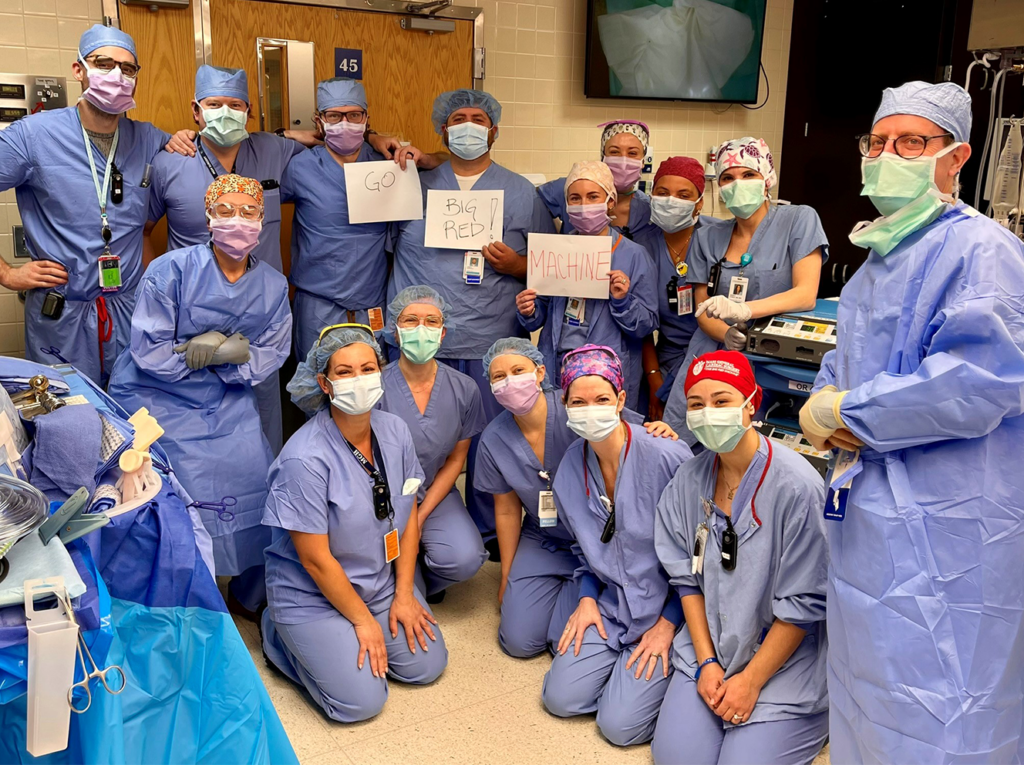Imagine that you are so sensitive to daylight that even modest exposure causes your skin to burn for days as if it had been lit on fire. Sunscreen doesn’t help because the flare-ups are not caused by UV rays. Aloe does nothing, ice water hurts too, and there are little to no visible symptoms so the people around you — even many doctors — think you’re making it up.
“One lady in my clinic keeps the blinds closed all day. She has to cover her entire body even her face when she goes outside.”
This hellish scenario is quite real for those who suffer from erythropoietic protoporphyria (EPP), a rare genetic disease that causes the buildup of an organic compound that causes painful skin sensitivity to light.
“Some patients have to use special light bulbs, or they are in pain all the time,” says Amy Dickey, MD, a pulmonologist at Massachusetts General Hospital who conducts pioneering research on the disease. “One lady in my clinic keeps the blinds closed all day. She has to cover her entire body even her face when she goes outside — and she still has symptoms.”
Thanks to Mass General’s Healthcare Transformation Lab (HTL), Dr. Dickey is making progress toward her long-term goal to develop a wearable device that will help patients establish how much light they can be exposed to before symptoms kick in, then warn them as they approach that threshold. This device will also help quantify light sensitivity for clinical trials, to help get new medications approved for EPP more quickly.
EPP is one disease in a family of genetic diseases called porphyria. “Porphyria is an area of great need and opportunity, “she says. “It’s also something very close to my heart.”
What’s Wrong With Me?
Dr. Dickey has suffered from porphyria her entire life. Her parents first noticed the symptoms when she was 3 years old, but her condition wasn’t diagnosed until she was 13. So she spent her entire childhood not knowing what was wrong with her.

“I suffered burning pain as if my hands were lit on fire,” she recalls. “It was impossible to sleep or concentrate and the symptoms would last for nearly a week. This happened frequently over the summers when I was growing up.”
Like many EPP sufferers, there were initially no outward symptoms — no rash, no blisters, no sunburn. She looked absolutely fine. When her parents brought her to a doctor, he found nothing wrong with her and concluded that all she needed was better discipline. He recommended more frequent spankings.
Now, although the pain is the same as before, she also gets severe swelling and burst blood vessels, but nothing is visible on the first day when the pain is at its worst.
Dr. Dickey’s experience is typical for EPP patients. In addition to the painful symptoms and severe limitations on their lifestyle, they have to contend with the doubts of others — classmates, teachers and doctors — who question whether their invisible malady is real, or if it can really be that painful. As a result, many sufferers grapple with anxiety and depression.
The problem is much larger than previously thought. In September 2020, Dr. Dickey published a paper in Genetics in Medicine showing that EPP was up to seven times more common that the actual disease diagnosis in one large genetic dataset indicated and that many sufferers remain undiagnosed.
“It was miraculous to me when I was accepted as a fellow at the HTL. This program provided the support I needed to make a pivotal career transition. They took a risk on me when I needed it most.”
Although she had many research ideas, Dr. Dickey quickly realized that there was no funding or expert supervision available for for porphyria research. She was urged by many peers and career advisors to choose another research topic.
That’s when the Mass General’s Healthcare Transformation Lab stepped in.
Committed to Innovation
“It was miraculous to me when I was accepted as a fellow at the HTL,” says Dr. Dickey. “This program provided the support I needed to make a pivotal career transition. They took a risk on me when I needed it most.”
The Healthcare Transformation Lab provides year-long fellowships that make it possible for physicians to step away from their daily duties to develop creative solutions to health care challenges. The fellowship provides funding, research space and mentoring in research design and the business skills that bring innovations to reality.
Dr. Dickey’s goal is to design a wearable device to help EPP patients control their symptoms. In 2019 the first medication was approved for EPP in the U.S. This medication called afamelanotide helps to decrease susceptibility to sunlight but does not treat symptoms once they begin. But it is also prohibitively expensive for many sufferers, as is common for many treatments in rare disease.
The HTL fellowship helped her produce the preliminary data needed to secure federal funding, as well as initiate collaborations with industry related to her light monitoring device.
“Because of my experience with EPP, other patients feel like family to me,” says Dr. Dickey who has also established a porphyria clinic in the hematology division at Mass General with Rebecca Karp, MD and Sarina Elmariah, MD, PhD. “There are things we understand immediately about each other that nobody else does. Through my research, I’m trying to help my family.”
You can advance health care of the future by donating to the Healthcare Transformation Lab. If you would like more information, please contact us.






